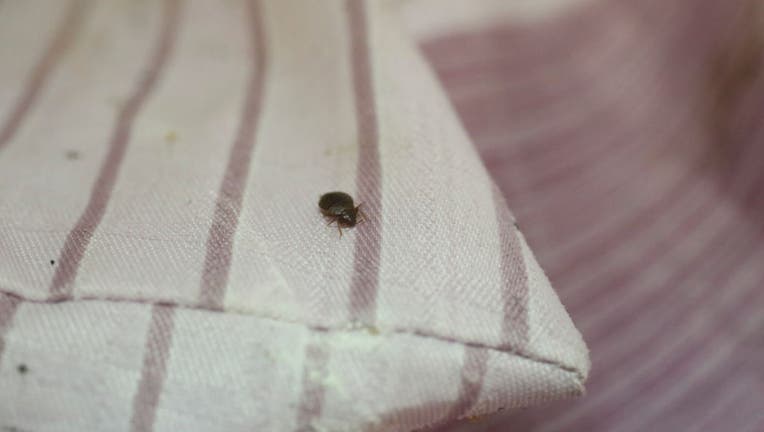It has been suggested that reusing H2F frames at the end of a building’s life cycle can be a significant problem in 20-30 years. This article explains the nature and benefits of H2F framing, why the proposed timeline is too short, and why the scale of the problem has been overestimated.
H2F treated frames, easily recognized by their distinctive blue coloration, were developed to prevent termite infestation, a potential problem with improperly constructed buildings in some areas of Australia.
It has long been known that excluding termites is far cheaper than controlling them and making repairs as soon as they invade a structure. Once in, termites can damage not only wood, including frames, joinery, and furniture, but also other cellulosic materials, even the paper covering on plasterboard.
The traditional approach to termite protection has been to create a chemical barrier that soaks the soil with a long-lasting insecticide (chlordane was an important insecticide). Homes were also built with exposed surfaces so termite attempts (e.g., mud pipes) could be easily identified. Mechanical barriers such as mesh are also used to prevent termites from entering.
Today, many of the long-lived soil toxins are no longer available and those that offer shorter protection times, often less than 10 years, have to be reapplied to continue protecting the building.
The conifers used for most wooden frames in Australia are not naturally termite resistant. The H2F process coats the dry wood with a thin layer of an insecticide with additional blue paint so that it is easily recognizable on the construction site.
The H2F treatment uses one of three insecticides: bifenthrin, permethrin, or imidacloprid. Permethrin (which is commonly used to treat scabies and lice in humans) and bifenthrin are pyrethroids that are related to natural substances in chrysanthemums. Imidacloprid is a neonicotinoid that is related to the nicotine found in tobacco.
All are effective at very low levels, have exceptionally low toxicity to humans, and repel termites, thereby protecting the life of the structure, typically 50 years or more. Retrofitted homes that retain the H2F treated wooden frame and update other features will continue to benefit from its protection. Many half-timbered houses currently inhabited in Australia were built in the 19th century.
It has been suggested that the disposal of H2F frames at the end of the life of a building can be a problem. There are currently few economical ways to dispose of frame wood other than landfill or composting. This situation can be expected to change as the market adopts and applies the concept of a circular economy, where the retrieval and reuse of materials is a much greater focus.
The Center for Wood Durability and Lifespan at the University of the Sunshine Coast is currently working on ways to improve the reuse of wood, while the timber industry is looking for national approaches to recovery and reuse that avoid landfills.
H2F framing was introduced relatively recently, so very little currently ends up in the waste stream.
However, for the H2F treated wood that ends up in the waste stream, it is important to consider the chemical levels in these woods and the associated risks, as well as the relative degradation rates in a typical municipal waste facility.
The Australian standards (AS / NZS-1604) for H2F treatment specify slightly different amounts for each of the three chemicals at slightly different depths of the wood.
The amounts of any of the three chemicals in wood are extremely small. This clearly distinguishes these low-level, flat treatments for indoor use from those used for high-performance protection outdoors, such as: B. chromated copper arsenate (CCA), which may have very different disposal routes.
It is technically feasible to compost wood treated with H2F. The extremely small amounts of chemicals in the H2F treatments tend to bind to the soil and organic particles in the soil, where they decompose over a period of days to months, depending on the environmental conditions.
The other likely option is landfill. Almost all modern municipal waste plants are lined and the waste is densely compacted and covered. This creates a substantially anaerobic (oxygen free) environment in which there is little to no degradation of the wood.
Research on wood dug up in older landfills shows little evidence of deterioration. The presence of small amounts of insecticides would have little or no effect on these processes.
In summary, the disposal or reuse of H2F treated wood is similar to most wood species. The small amounts of chemicals in the wood treated with H2F have a negligible influence on the process.
The benefits of H2F treated wood in replacing toxic chemical flooring floors to provide lasting protection and increase the durability and life of our homes greatly outweigh any other potential problems.
professor Jeffrey J Morrell, director of the National Center for Wood Durability and Design Lifespan
Spinifex is a column of opinion open to all of our readers. We need more than 700 words on sustainability issues, especially in the built environment and in the economy. For a more detailed description, please email editorial@thefifthestate.com.au








